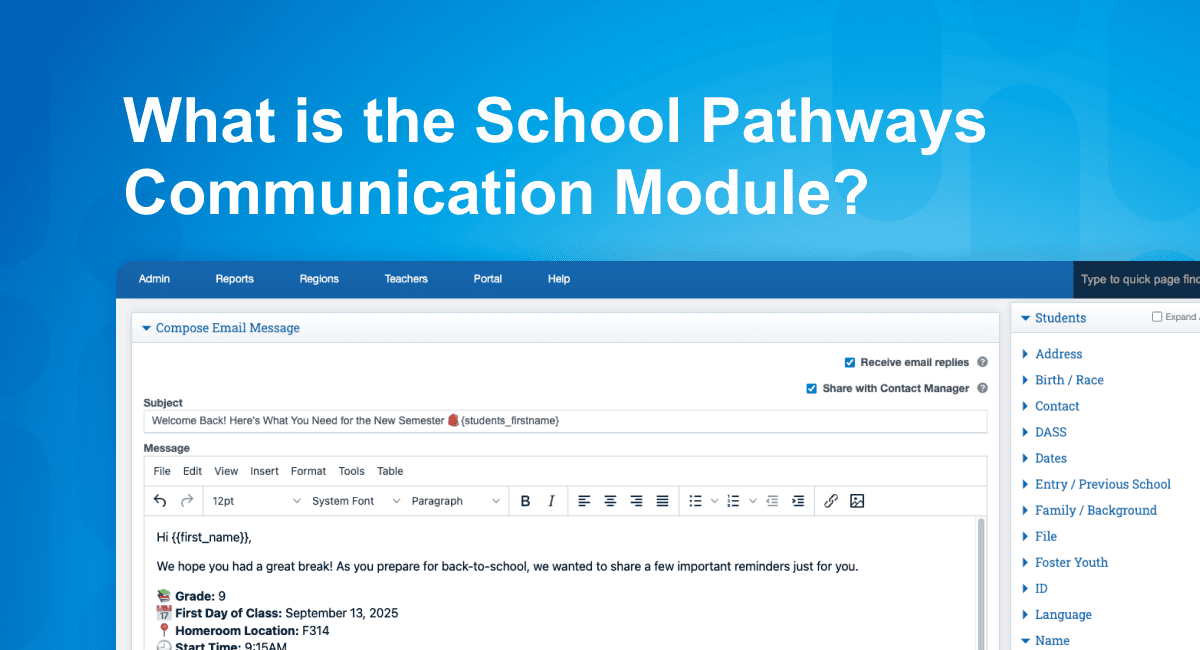Teachers are the backbone of a well-functioning and educated society. Their passion, talents, and empathy set our younger generations on a path to success. While teaching is an incredibly rewarding career, the responsibility comes with immense pressure and a need for families and educators alike to focus on teacher wellness.
In fact, the pressure is so widespread that Gallup has found K-12 teachers have burnout rates higher than any other profession. “Working with students, navigating family/parent dynamics, and continuously evolving national and state-level policies have made for a difficult job.”
In this article, we’ll explore the importance of teacher wellness and share strategies to promote and nurture it as we navigate the ongoing challenges of the new school year.
The Case for Teacher Wellness
To put it in perspective, a 2018 study by the University of Missouri found that 93% of all teachers experience overwhelming levels of stress. That means 3.3 million stressed-out teachers responsible for 800 million children need support and relief to do their best work. Stressed-out teachers become less effective in their roles, leading to lower test scores, lower grades, and more student behavioral problems. The problem also has far-reaching impacts, as reported by the Alliance for Excellent Education: teacher attrition, which is heavily correlated with burnout, costs the government $2.2 billion annually.
Furthermore, teachers expressed how poor mental health has adversely affected their job performance. According to the Merrimack College Teacher Survey, 42% (out of more than 1,200 participants) of teachers said their professional performance and growth had suffered because of their mental health. About half of teachers also reported negative impacts on their colleagues’ performances.
Teacher wellness isn’t just a nice-to-have; it’s essential for thriving educational environments. When teachers are well-supported and healthy, they’re more effective in the classroom, more engaged with their students, and more likely to stay in the profession. Communities at large see better student outcomes, which in turn builds a generation better equipped to navigate the complexities of an ever-changing world.
Clearly, the well-being of teachers is crucial to ensuring our society has a healthy, vibrant workforce of educators who have the acuity — physically, mentally, and emotionally — to do one of the most important jobs in the world.
Strategies for Enhancing Teacher Wellness
So what can administrators do to help ensure teachers have the wellness support they need to succeed? There are many teacher wellness approaches that span from interpersonal, administrative, technological, and beyond. Let’s take a look at six effective strategies for enhancing teacher wellness.
Nurture a Culture of Support and Growth
From day one, teachers need to know they are part of a team and not alone in their efforts and challenges. School leaders can contribute to teacher wellness by nurturing a culture of support and growth from the moment a teacher joins their staff.
This starts with school administrators looking for ways to connect teachers with one another in meaningful ways. One impactful plan is including teacher planning days with instructional coaches to help facilitate a distraction-free and professionally supported space for designing effective teaching strategies.
Faculty-led welcome committees or dedicated clubs for pedagogy can bring new teachers into the community and help them find a supportive team so they never feel alone in their efforts. It can also help newer teachers connect with more experienced educators so that institutional knowledge and effective teaching strategies are shared openly.
It is also worth investing in paid leadership opportunities to help teachers grow their professional network beyond their own district. These can include the Department of Education’s Effective Educator Development Programs’ School Ambassador Fellowship and the National Education Association Foundation’s Global Learning Fellowship.
Create Effective Coping Strategies
No matter how robust your teacher wellness program is, teachers can benefit from coping strategies to address challenging student interactions.
More than half of all U.S. children have experienced some kind of trauma, including abuse, neglect, violence, or challenging household circumstances, according to the Centers for Disease Control and Prevention (CDC). Teachers’ care for their students is crucial to their work, but it also leaves them vulnerable to the traumatic impacts of these challenging realities. Students do not leave this emotional baggage at the door of the classroom, and teachers feel the impact in profound and overwhelming ways.
Establish wellness accountability buddies and build support systems to help teachers manage these challenging experiences. Help promote work-life balance by encouraging teachers to map out time for mindfulness and breaks to reduce stress levels and support them in making sure they can actually use this time as designed.
Establish Teacher Wellness Routines
The educational workplace often runs on a set routine, with academic calendars and daily schedules planned well in advance. Why not use this structure to promote teacher wellness?
Start by sharing surveys and scheduling check-ins to identify teacher needs. Feedback from those interactions can allow school administrators to design programs that help teachers manage stress, self-care, and time on a daily basis. Creating supportive structures to discuss workload and wellness habits openly empowers teachers to feel heard and adopt healthy practices.
Teachers and administrators can also collaborate to establish mutual agreements on setting boundaries and communication standards with colleagues and families. For example, they can agree on response times, preferred ways to communicate, and designated meeting times. These standards allow for work-life balance and give teachers a clear sense of being “off duty” from the pressures of their workplace.
It’s also important to lead by example. Take breaks and disconnect from work after hours and model healthy communication boundaries within the administration. Make it clear that teachers are not expected to be “on” every minute of the day.
Harness the Power of EdTech
In addition to day-to-day emotional demands, teachers also face administrative demands that consume their time. According to the 2023 Merrimack Teacher Survey, 57% of teachers say that administrative burdens such as meetings and paperwork impact their mental health. Furthermore, a 2023 national survey from the National Alliance for Public Charter Schools reports that 66% of teachers say having more time to focus on teaching (rather than administrative tasks) would motivate them to stay in the profession.
Balancing these responsibilities can be challenging, especially when the unpredictable nature of student-facing work leaves little room for daily clerical tasks. While considering teacher wellness, educational technologies are available that can alleviate administrative burdens.
Administrative and instructional technology can reduce teacher workloads and streamline tasks. From enabling educators to build and monitor individual learning plans at scale to having a centralized place to track activities and contextualize data, instructional technology can save teachers time and energy, giving them the room to focus on their mental health and classroom practices.
Embrace Artificial Intelligence (AI) in Education
Another promising time-saving tool is AI. Educators can use AI to create personalized lesson plans, provide feedback to students on their work, and handle administrative tasks. School counselors also offer a unique way to harness AI by using it to assess students’ feelings about school and provide recommendations, offering much-needed support.
Bear in mind that it is essential to approach AI-driven support with caution and a critical eye to ensure its quality meets the standards set by educators and their institutions. If policies are crafted thoughtfully, the benefits of AI can far outweigh the challenges.
For example, Howard Middle School for Math and Sciences adopted AI to enhance educational outcomes, personalize learning experiences, and streamline administrative tasks while still ensuring the safety, privacy, and well-being of their students and staff. These models can serve as valuable frameworks for reducing unnecessary demands on teachers and enhancing support.
Provide Mental Health Support for Teachers and Students
As we talk about teacher support, it’s important to remember that supporting students has a major impact on teacher well-being. In fact, 74% of teachers cite student behavior and discipline issues as one of their biggest challenges. When these challenges are present in the classroom, teachers spend more time counseling students and less time educating them. Addressing these behavioral concerns early on supports teacher wellness by reducing the burden and giving teachers more space to focus on their primary goals.
Create classroom management plans for teachers to address disruptive classroom behavior with empathy and proactive approaches. Build mentorship programs to pair dedicated, trained staff with students for better SEL outcomes and time for these important relationships that are built into the day rather than disrupting other educational time.
Another worthwhile investment is coaching or wellness reimbursement for teachers who can seek out the training and support they need for their individual situations.
A Focus on Teacher Wellness Benefits All
Teaching remains one of the most important and impactful professions, but teacher burnout and attrition are concerning trends that could potentially disrupt the pursuit of quality education. Administrators must take teacher wellness seriously if they want to create sustainable work environments conducive to teacher retention and positive learning outcomes for everyone involved — from the administrators and teachers to students and the community at large.
Schools have a wide range of approaches available to support teachers’ mental, emotional, and physical well-being. There’s no single path that administrators can take. Teacher support takes many forms, and administrators should weave these options into their practices from top to bottom. By adopting interpersonal connections, investing in training and activities that support teachers’ health, and reducing administrative burdens with integrated technological solutions, schools can put teacher wellness at the forefront.
Let School Pathways help create administrative systems designed to enhance daily instructional activities and save your teachers’ time so they can focus on what matters most. Chat with us today.





